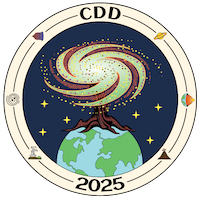The geomagnetic field observed at the Earth's surface or at satellite altitudes is the result of a combination of signals generated by both internal and external sources. Internal sources include magnetic fields produced by the geodynamo in the Earth's outer core, as well as fields generated by magnetized rocks in the lithosphere and induced magnetic fields within the lithosphere and mantle....
Submarine Earthquakes can trigger large tsunami waves, causing major risks and potentially disastrous consequences on coastal communities. It is therefore essential to assess the tsunamigenic potential of an event by determining its characteristics (magnitude, location, and surface displacements). However, providing accurate early warnings in the case of deep ocean earthquakes remains...
The detailed 3D fault model and further seismic rupture behavior analysis and fault mechanics simulation based on it are important and meaningful. A strong Mw 6.6 earthquake occurred in Luding, Sichuan, on 5 September 2022, the epicenter was located near the Moxi segment of the Xianshuihe Fault Zone (XSHF) in southeastern Tibetan Plateau. This earthquake is also situated at the Y-shaped...
Magma reservoirs (mixture of liquid melt, crystals, and gases) are normally present beneath most active volcanoes from where dikes initiate, and magma erupts to the surface. Depending upon the thermal state of the reservoir, magma may be in a pure melt state if supplied by fresh melt from below, or in a mush state because of cooling by hydrothermal circulation, which increases the crystal...
With the return of lunar material from the Chang’E 5 and Chang’E 6 missions and the upcoming Mars Sample Return mission, developing optimized methodologies for analyzing rare and highly valuable samples of regolith is essential. These samples offer unique insights into the physical and geochemical evolution of planetary bodies. Among the tools available for studying these processes, natural...
Mongolian tectonics is shaped by the far-reaching effects of the Indo-Eurasian collision, which drives deformation and stress over 2000 km behind the Himalayan front. During the 20th century, Mongolia experienced four earthquakes with magnitudes greater than 8, making it an exceptional location for studying intraplate seismicity, predominantly with strike-slip components. Among these events,...
Storing seasonal energy in the subsurface using High-Temperature Aquifer Thermal Energy Storage (HT-ATES) can significantly reduce the energy consumption and greenhouse gas emissions of the heating sector. Compared to conventional ATES, which operates at lower temperatures (25–30°C), HT-ATES can store water heated up to 90°C. While higher temperatures improve efficiency, they also induce...
The composition of the Earth's atmosphere is an archive of the geological history of our planet. Noble gases are excellent tracers of processes like atmospheric escape, mantle outgassing, allowing estimates of Earth's ancient geodynamics [1,2]. For example, the atmospheric 20Ne/22Ne ratio has evolved through degassing of solar neon from the mantle in an originally chondritic atmosphere...
Earthquakes result from the accumulation of stresses in the Earth's crust. Tidal stress is typically a few kilopascals, with primary components having periods of about 12 and 24 hours. Observational studies show that slow earthquakes are sensitive to tidal stress (Rubinstein et al., Science, 2008; Nakata et al., NG, 2008; Thomas et al., Nature, 2009), while the effect of tidal stress on...
Accurate models of the Earth's interior are essential not only to satisfy scientific curiosity but also to serve society, given their immediate applications and practical significance. Seismic waves remain our most powerful window into the Earth's interior, yet both the modeling of wave propagation and the interpretation of seismic data present significant challenges. Numerical methods, for...
GNSS/Acoustic technology enables the measurement of absolute horizontal seafloor displacements through repeated surveys of acoustic beacons over several years. However, a key limitation of this approach is that the beacons must remain underwater for extended periods.
In this study, we explore an alternative method that combines photogrammetry and GNSS/Acoustic techniques to determine the...
Recent studies have highlighted the presence of aromatic amino acids (Ménez et al., 2018) and solid organic compounds (Sforna et al., 2018; Andreani et al., 2023) in mantle rocks exposed along the Mid-Atlantic Ridge. These organic compounds were formed abiotically - without the involvement of life - through the reduction of inorganic carbon (e.g., CO2) by geogenic hydrogen (H2) during...
The mantle wedge above subduction zones is often considered more oxidized (i.e., exhibiting higher oxygen fugacity (fO₂)) than other mantle domains due to metasomatism by slab-derived fluids. Garnet peridotites from subduction zones, for instance, record oxygen fugacities that are 3–4 log units higher than those of garnet peridotite xenoliths from the sub-cratonic mantle. However, no direct...
Pulsar Timing Array (PTA) observations are carried out to search for
gravitational waves (GWs) in the nano-Hertz band. The most plausible
source is the population of supermassive black hole binaries emitting
GWs that incoherently superpose and form a stochastic GW background
(SGWB). In addition, particularly massive and nearby SMBHBs produce
strong signals that may stand out above the...
The Alboran-Al Hoceima region is a tectonically complex active zone, marked during the last decades by several major earthquakes (1994, 2004, 2016) and series of seismic swarms that reveal diverse triggering mechanisms. These mechanisms are driven by a combination of evolving mantle-lithospheric processes, tectonic forces, and fluid interactions. The prolonged 2021–2022 seismic swarm, marked...
Carbon cycling between Earth's surface and mantle reservoirs is crucial for maintaining planetary habitability. However, a significant yet poorly constrained aspect is the extent to which crustal carbon can withstand devolatilization during subduction, thereby influencing the deep Earth's carbon budget. Carbonatites offer an invaluable record to investigate this issue. Here, we present...
Tsunamis are one of the most destructive natural hazards causing heavy human losses. They can be generated by submarine earthquakes and/or volcanic eruptions and landslides) and it is almost impossible to forecast their impact.
A near-real-time monitoring of tsunamis is required for population’s safety. Differents methods are currently used to monitor tsunami propagation in both near...

